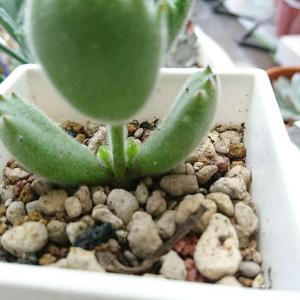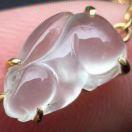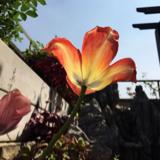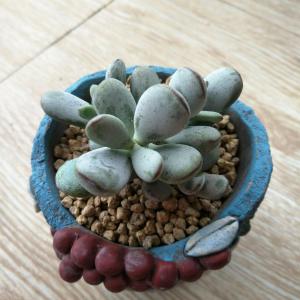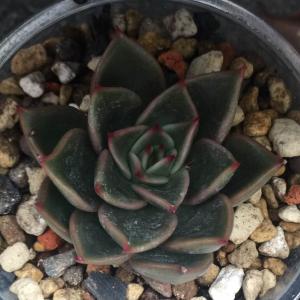文章
Miss Chen
2018年04月03日

Description: This woody vine produces stems up to 15' long that trail along the ground; some of the flowering stems are more erect and up to 4' tall. Old stems are brown and woody with scattered hooked prickles. Young stems are green with scattered hooked prickles; they are also more or less hairy. Alternate compound leaves occur at intervals along the stems. They are usually trifoliate with 3 leaflets; less often, compound leaves with 5 leaflets occur. These leaflets are up to 3" long and 1" across; they are ovate, doubly serrate along the margins, and mostly hairless. The underside of each leaflet is pale green, rather than white or velvety. Most leaflets have wedge-shaped bottoms and tips that taper gradually. The terminal leaflet has a short petiole (petiolule), while the lateral leaflets are sessile. Each compound leaf is connected to the stem by a long petiole. At the base of this petiole, there is a pair of small linear stipules.
Flowers & Leaflets
Young stems often terminate in a corymb of 1-5 flowers. Each flower is about 1-1¼" across when fully open; it consists of 5 white petals, 5 lanceolate green sepals, and numerous stamens that surround a green cluster of carpels. The petals are longer than the sepals and they often have a somewhat wrinkled appearance. The blooming period occurs from mid-spring to early summer and lasts about 1-2 months. The flowers open up during the day and close at night. Each fertilized flower is replaced by a compound drupe up to 1" long that is longer than it is broad. A fully ripened drupe becomes purple-black or black and it has a tart-sweet flavor. This drupe does not detach from its receptacle easily. The root system consists of a woody taproot. This woody vine spreads by reseeding itself; sometimes, the tips of young stems will root in the ground, forming vegetative offsets.

Cultivation: This plant typically grows in full to partial sun and mesic to dry conditions. It tolerates different kinds of soil, including those containing loam, clay-loam, sand, or rocky material.
Range & Habitat: The native Common Dewberry is common in the southern half of Illinois; it is less common or absent in the northern half of the state, particularly in the NW area (see Distribution Map). Habitats include mesic to dry savannas and sandy savannas, woodland borders, meadows in wooded areas, and abandoned fields. Common Dewberry is found in both sandy and non-sandy habitats. Occasional wildfires that remove tall woody vegetation tend to increase the population of Common Dewberry.

Faunal Associations: The flowers attract both long-tongued and short-tongued bees, including honeybees, bumblebees, Mason bees, Leaf-Cutting bees, Cuckoo bees (Nomadine), and Miner bees (Eucerine). These insects suck nectar or collect pollen. The flowers also attract butterflies, skippers, and various flies. Insects that feed on various parts of Common Dewberry and other Rubus spp. include Siphonophora rubi (Blackberry Aphid; sucks juices), Edwardsiana rosae (Rose Leafhopper; sucks juices), Metallus rubi (Blackberry Leafminer; sawfly maggot tunnels through leaves), Agrilus ruficollis (Red-Necked Cane Borer; beetle grub bores through stems), and the caterpillars of many moths. The drupes of Common Dewberry and other Rubus spp. are an important source of summer food to many upland gamebirds and songbirds (see Bird Table). The Raccoon, Fox Squirrel, Eastern Chipmunk, White-Footed Mouse, and other mammals also eat the fruits, while the Cottontail Rabbit and White-Tailed Deer browse on the leaves and stems.

Photographic Location: A meadow in a wooded area at Orchid Hill in Vermilion County, Illinois; a sandy meadow at Irwin Prairie State Nature Preserve in Lucas County, Ohio; and the Indiana Dunes State Park in NW Indiana.
Comments: The compound drupes (fruits) of Common Dewberry are edible to humans; when they are fully ripened, their flavor is pleasant. Common Dewberry can be distinguished from most Rubus spp. (Blackberries) by its vine-like habit. There are other Rubus spp. that are woody vines in various areas of the state, but they are less common. One of them, Rubus trivialis (Southern Dewberry) is restricted to southern Illinois. Its appearance and growth habit is similar to Common Dewberry, but the young stems of Southern Dewberry usually have sharp bristles and prickles. The young stems of Common Dewberry have soft hairs and prickles, but not sharp bristles. The leaves of Southern Dewberry are evergreen, while those of Common Dewberry are deciduous. The appearance of Common Dewberry is somewhat variable across its broad range, although different varieties have not been described for Illinois.
Flowers & Leaflets
Young stems often terminate in a corymb of 1-5 flowers. Each flower is about 1-1¼" across when fully open; it consists of 5 white petals, 5 lanceolate green sepals, and numerous stamens that surround a green cluster of carpels. The petals are longer than the sepals and they often have a somewhat wrinkled appearance. The blooming period occurs from mid-spring to early summer and lasts about 1-2 months. The flowers open up during the day and close at night. Each fertilized flower is replaced by a compound drupe up to 1" long that is longer than it is broad. A fully ripened drupe becomes purple-black or black and it has a tart-sweet flavor. This drupe does not detach from its receptacle easily. The root system consists of a woody taproot. This woody vine spreads by reseeding itself; sometimes, the tips of young stems will root in the ground, forming vegetative offsets.

Cultivation: This plant typically grows in full to partial sun and mesic to dry conditions. It tolerates different kinds of soil, including those containing loam, clay-loam, sand, or rocky material.
Range & Habitat: The native Common Dewberry is common in the southern half of Illinois; it is less common or absent in the northern half of the state, particularly in the NW area (see Distribution Map). Habitats include mesic to dry savannas and sandy savannas, woodland borders, meadows in wooded areas, and abandoned fields. Common Dewberry is found in both sandy and non-sandy habitats. Occasional wildfires that remove tall woody vegetation tend to increase the population of Common Dewberry.

Faunal Associations: The flowers attract both long-tongued and short-tongued bees, including honeybees, bumblebees, Mason bees, Leaf-Cutting bees, Cuckoo bees (Nomadine), and Miner bees (Eucerine). These insects suck nectar or collect pollen. The flowers also attract butterflies, skippers, and various flies. Insects that feed on various parts of Common Dewberry and other Rubus spp. include Siphonophora rubi (Blackberry Aphid; sucks juices), Edwardsiana rosae (Rose Leafhopper; sucks juices), Metallus rubi (Blackberry Leafminer; sawfly maggot tunnels through leaves), Agrilus ruficollis (Red-Necked Cane Borer; beetle grub bores through stems), and the caterpillars of many moths. The drupes of Common Dewberry and other Rubus spp. are an important source of summer food to many upland gamebirds and songbirds (see Bird Table). The Raccoon, Fox Squirrel, Eastern Chipmunk, White-Footed Mouse, and other mammals also eat the fruits, while the Cottontail Rabbit and White-Tailed Deer browse on the leaves and stems.

Photographic Location: A meadow in a wooded area at Orchid Hill in Vermilion County, Illinois; a sandy meadow at Irwin Prairie State Nature Preserve in Lucas County, Ohio; and the Indiana Dunes State Park in NW Indiana.
Comments: The compound drupes (fruits) of Common Dewberry are edible to humans; when they are fully ripened, their flavor is pleasant. Common Dewberry can be distinguished from most Rubus spp. (Blackberries) by its vine-like habit. There are other Rubus spp. that are woody vines in various areas of the state, but they are less common. One of them, Rubus trivialis (Southern Dewberry) is restricted to southern Illinois. Its appearance and growth habit is similar to Common Dewberry, but the young stems of Southern Dewberry usually have sharp bristles and prickles. The young stems of Common Dewberry have soft hairs and prickles, but not sharp bristles. The leaves of Southern Dewberry are evergreen, while those of Common Dewberry are deciduous. The appearance of Common Dewberry is somewhat variable across its broad range, although different varieties have not been described for Illinois.
0
0
文章
Miss Chen
2018年03月19日

Description: This herbaceous plant is a monocarpic perennial. It persists as a rosette of 3-30 basal leaves for 5-15 years (or more), finally bolting as a flowering plant that becomes 3-8' tall for a single season, and then dying. The basal leaves are up to 14" long and 4" across; they are oblong-elliptic to broadly oblong-elliptic in shape and smooth along their margins. The upper surfaces of the basal leaves are medium green and glabrous with prominent central veins; they are deciduous. The central stem of a flowering plant is light green to purple, glabrous, terete (circular in cross-section), rather stout, and unbranched. Along its entire length, there are whorls of 4-5 leaves (rarely more) that become gradually smaller in size as they ascend the central stem. Individual whorled leaves are 3-12" long and ¾-3" across; they are oblong-elliptic, oblong-lanceolate, or oblong-oblanceolate in shape with smooth margins. The upper surfaces of these leaves are dark green and glabrous with prominent central veins; they are also deciduous. The central stem terminates in a panicle of flowers up to 2' long (typically 50-100 flowers per panicle). This panicle is narrowly pyramidal in shape with spreading to ascending lateral branches. The terminal branches produce clusters of 2-6 flowers each on pedicels ¾-2" long.
Each flower is ¾-1¼" across, consisting of a shallow corolla with 4-5 spreading petaloid lobes, a shallow calyx with 4-5 spreading lobes, 4-5 stamens, and a superior ovary with a single style. Usually, the flowers are divided into 4 parts, rather than 5. The corolla lobes are oblong-lanceolate or oblong-elliptic in shape; they are mostly greenish white with purple specks or streaks, although their bases may be tinted pale yellow or pale pink. Toward the middle of each corolla lobe, there is a conspicuous nectar pad that is heavily fringed. The bases of these nectar pads are surrounded by rings of green. The calyx and its lobes are medium green and glabrous; individual lobes are linear-lanceolate and up to ½" long. The superior ovary is light green. The peduncle, lateral branches, and pedicels of the inflorescence are light green to purple, glabrous, and terete. At locations where there are divergent branches within the inflorescence, there are pairs of leafy bracts about 1-3" long that are linear-lanceolate or linear-oblong in shape. The blooming period occurs from late spring to early summer, lasting about 3 weeks. The flowers within a panicle bloom at about the same time. Individual plants in a colony have a tendency to bloom synchronically (during the same year at the same time), which facilitates cross-pollination of the flowers. Afterwards, the flowers are replaced by ovoid seed capsules about ½-¾" in length; these capsules are strongly beaked from the persistent styles. At maturity, these capsules become dark brown and split open to release their seeds. Each capsule contains 4-14 dark brown seeds that are crescent-shaped and winged. The root system consists of a fleshy taproot.

Cultivation: The preference is full sun to light shade, mesic to dry-mesic conditions, and calcareous soil that is loamy, rocky, or sandy. The seeds require a dormant period with cool moist stratification in order to germinate. Because this plant persists as a rosette of basal leaves for several years, it is slow to develop, and its seeds are not often available commercially. Problems with disease organisms or insect pests rarely occur.
Range & Habitat: The native American Columbo is occasional in the southern half of Illinois, rare (or possibly extirpated) in NE Illinois, and absent from the rest of the state (see Distribution Map). Illinois lies along the NW range limit of this species. Habitats include upland savannas, upland woodlands, wooded slopes, limestone and sandstone glades, woodland openings, and small meadows in upland wooded areas. In areas near southern Lake Michigan, this plant occurs in similar habitats with calcareous sand. American Columbo is often associated with upland oak trees and such ferns as Asplenium platyneuron (Ebony Spleenwort) and Polystichum acrostichoides (Christmas Fern). It is found in higher quality natural areas.
Faunal Associations: The flowers are cross-pollinated primarily by such long-tongued bees as honeybees, bumblebees, and Anthophorine bees (Anthophora spp.); these insects obtain mostly nectar from the flowers. Aside from these pollinators, there are few records of floral-faunal relationships for American Columbo. The basal leaves of more western species in the same genus, sometimes referred to as 'Elkweed,' are eaten occasionally by elk and other hoofed mammalian herbivores. However, evidence of such browsing hasn't been observed by the author for the more eastern American Columbo.

Photographic Location: A rocky wooded slope in southern Illinois and an upland woodland in east-central Illinois.
Comments: American Columbo is an unusual native plant that has a tall striking appearance when it finally bolts and blooms. The greenish white flowers with purplish specks or streaks have an odd appearance; they are produced in great abundance during the blooming period. Even though the flowers of American Columbo have conspicuous nectar pads like some species in the Lily family (Liliaceae), such as Melanthium virginicum (Virginia Bunchflower) and Veratrum woodii (False Hellebore), it is not closely related to these latter species (the former species is a dicot, while the latter are monocots). The Frasera genus is a small group of plants that are found primarily in western North America. American Columbo is the only eastern species, making flowering plants easy to identity. Immature plants consisting of basal leaves, however, can be confused with the immature stage of False Hellebore. An obsolete scientific name for American Columbo is Swertia caroliniensis.
Each flower is ¾-1¼" across, consisting of a shallow corolla with 4-5 spreading petaloid lobes, a shallow calyx with 4-5 spreading lobes, 4-5 stamens, and a superior ovary with a single style. Usually, the flowers are divided into 4 parts, rather than 5. The corolla lobes are oblong-lanceolate or oblong-elliptic in shape; they are mostly greenish white with purple specks or streaks, although their bases may be tinted pale yellow or pale pink. Toward the middle of each corolla lobe, there is a conspicuous nectar pad that is heavily fringed. The bases of these nectar pads are surrounded by rings of green. The calyx and its lobes are medium green and glabrous; individual lobes are linear-lanceolate and up to ½" long. The superior ovary is light green. The peduncle, lateral branches, and pedicels of the inflorescence are light green to purple, glabrous, and terete. At locations where there are divergent branches within the inflorescence, there are pairs of leafy bracts about 1-3" long that are linear-lanceolate or linear-oblong in shape. The blooming period occurs from late spring to early summer, lasting about 3 weeks. The flowers within a panicle bloom at about the same time. Individual plants in a colony have a tendency to bloom synchronically (during the same year at the same time), which facilitates cross-pollination of the flowers. Afterwards, the flowers are replaced by ovoid seed capsules about ½-¾" in length; these capsules are strongly beaked from the persistent styles. At maturity, these capsules become dark brown and split open to release their seeds. Each capsule contains 4-14 dark brown seeds that are crescent-shaped and winged. The root system consists of a fleshy taproot.

Cultivation: The preference is full sun to light shade, mesic to dry-mesic conditions, and calcareous soil that is loamy, rocky, or sandy. The seeds require a dormant period with cool moist stratification in order to germinate. Because this plant persists as a rosette of basal leaves for several years, it is slow to develop, and its seeds are not often available commercially. Problems with disease organisms or insect pests rarely occur.
Range & Habitat: The native American Columbo is occasional in the southern half of Illinois, rare (or possibly extirpated) in NE Illinois, and absent from the rest of the state (see Distribution Map). Illinois lies along the NW range limit of this species. Habitats include upland savannas, upland woodlands, wooded slopes, limestone and sandstone glades, woodland openings, and small meadows in upland wooded areas. In areas near southern Lake Michigan, this plant occurs in similar habitats with calcareous sand. American Columbo is often associated with upland oak trees and such ferns as Asplenium platyneuron (Ebony Spleenwort) and Polystichum acrostichoides (Christmas Fern). It is found in higher quality natural areas.
Faunal Associations: The flowers are cross-pollinated primarily by such long-tongued bees as honeybees, bumblebees, and Anthophorine bees (Anthophora spp.); these insects obtain mostly nectar from the flowers. Aside from these pollinators, there are few records of floral-faunal relationships for American Columbo. The basal leaves of more western species in the same genus, sometimes referred to as 'Elkweed,' are eaten occasionally by elk and other hoofed mammalian herbivores. However, evidence of such browsing hasn't been observed by the author for the more eastern American Columbo.

Photographic Location: A rocky wooded slope in southern Illinois and an upland woodland in east-central Illinois.
Comments: American Columbo is an unusual native plant that has a tall striking appearance when it finally bolts and blooms. The greenish white flowers with purplish specks or streaks have an odd appearance; they are produced in great abundance during the blooming period. Even though the flowers of American Columbo have conspicuous nectar pads like some species in the Lily family (Liliaceae), such as Melanthium virginicum (Virginia Bunchflower) and Veratrum woodii (False Hellebore), it is not closely related to these latter species (the former species is a dicot, while the latter are monocots). The Frasera genus is a small group of plants that are found primarily in western North America. American Columbo is the only eastern species, making flowering plants easy to identity. Immature plants consisting of basal leaves, however, can be confused with the immature stage of False Hellebore. An obsolete scientific name for American Columbo is Swertia caroliniensis.
0
0



